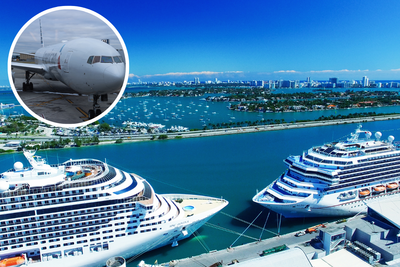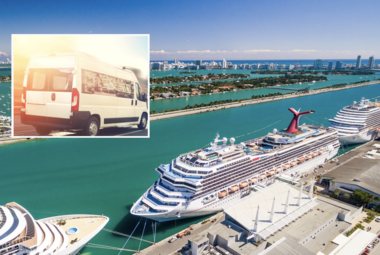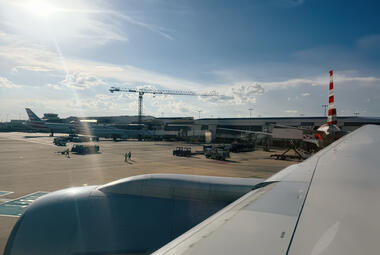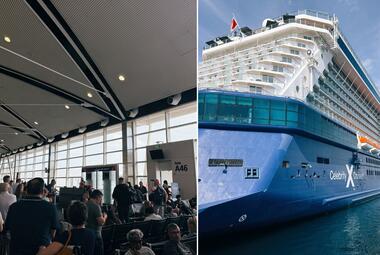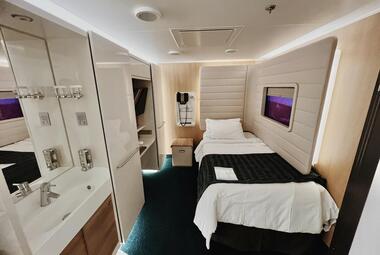Embarkation day is full of excitement; there's nothing quite like seeing your cruise ship in person for the first time! While waiting in the terminal isn't the most thrilling activity, cruise lines have streamlined the boarding process to get passengers onboard as quickly as possible.
For most, however, the adventure begins before arriving at the cruise port. Between navigating busy airport terminals and lengthy car rides, there are several strategies to make your embarkation experience smoother.
Follow these 13 hacks to make getting to your cruise ship easier.
Finish check-in as soon as possible
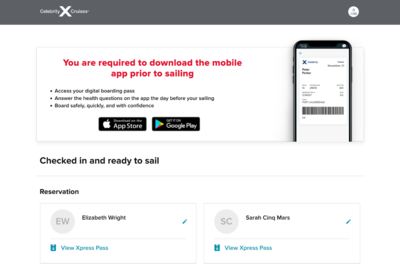
Your cruise line's online check-in process will open up weeks before your departure date. Carnival's, for example, opens 14 days before your sail date, while Norwegian's opens 21 days before and Royal Caribbean's 45 days prior. When you book your cruise, take note of when your check-in will open, as completing it as soon as possible ensures a smoother embarkation experience. Plus, you will not have to worry about remembering to cross it off your to-do list in the days leading up to your sailing.
During the online check-in process, you'll select an arrival time, set up your onboard expense account, and fill out your travel documentation. Once you arrive at the terminal, all that's left to do is go through security and have your physical documents verified! If you forget to complete the online check-in, you will waste valuable time finishing everything in the terminal.
Read more: 12 reasons to get as early a check-in time as possible for your cruise
Select a later arrival time
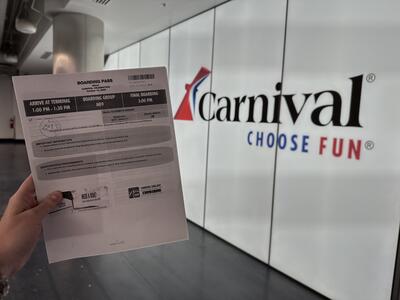
Though selecting a later time means you won't be one of the first guests onboard, you'll likely deal with fewer lines in the terminal, making it an appealing choice for those who want a hassle-free boarding process. Rather than wake up early and rush to the port, you can get a few more hours of rest and enjoy a leisurely breakfast.
Another perk of boarding later is that you'll miss the lunch rush, as the buffet tends to be the busiest from 12:00pm to 2:00pm. On most cruise lines, you can't access your stateroom until later in the afternoon, either. If you thought you could get a head start on unpacking before lunch, you were wrong, as it takes time for your luggage to be delivered, too.
Read more: Everything you need to know about cruise boarding times and how early to arrive for a cruise
Utilize packing cubes to spend less time unpacking
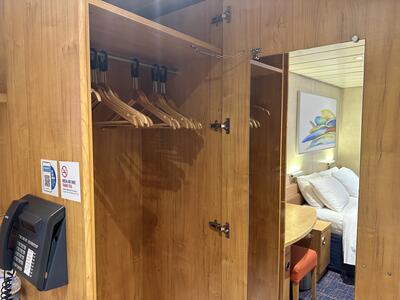
Once you've made it onboard and received your luggage, you won't want to spend too much time unpacking— there are far more exciting activities happening elsewhere! Veteran cruisers recommend using packing cubes because they help keep your belongings organized and speed up the unpacking/packing process.
Instead of taking each item of clothing out of your suitcase, you can remove the packing cube containing all your t-shirts or undergarments and throw it onto one of the closet's shelves or in a drawer. The faster you unpack, the sooner you can head back up to the lido deck or grab a pre-dinner cocktail at one of the bars.
Read more: 10 Biggest Mistakes to Avoid at Cruise Ship Embarkation And Disembarkation
Arrive one day early, especially if you're flying

Flight delays and cancelations are far too common, whether due to crew scheduling, maintenance issues, or inclement weather. Flying to your embarkation city on the day of your cruise is a recipe for disaster. If your flight gets delayed and you miss the all-aboard time, you'll be responsible for all costs associated with meeting up with the ship in the next port, if possible.
It's best to play it safe and fly in the night before, giving yourself a buffer in case things go astray. Though you'll have to pay for a pre-cruise hotel, I've found that credit card points can help offset the cost. Even so, spending $200 on a night's stay is better than wasting hundreds or thousands of dollars on unused cruise fares.
Read more: The costly cruising mistake newbies make planning their first cruise
Research pre-cruise transfers in advance

Thanks to rideshare apps and taxis, getting from the airport to the cruise terminal in cities like Miami, Fort Lauderdale, New York, Seattle, and Los Angeles is easy. Others, however, require a bit more planning. You won't want to bank on hiring an Uber at London Heathrow, for example, as Southampton is over an hour away. While it's certainly an option, it is not the cheapest method of transportation.
Instead, take time to research transfer options. Perhaps you want to play it safe and book a shared shuttle through the cruise line, or, if you have extra money to burn, relax in a private car. Whatever you decide, make sure that you have a reliable plan for embarkation morning, so you aren't trying to organize something at the last minute.
If you're driving, figure out where you want to park your car

Plenty of passengers opt to drive to the cruise terminal instead of flying. Though it may not be as convenient, driving is often cheaper, especially for larger families. Parking at the port can be expensive, so it's smart to research other options.
Parking at Port Canaveral, for instance, costs $17 per day, including the day of arrival and departure, meaning you'd rack up $120 in extra charges before stepping on the ship! In comparison, third-party vendor Port Canaveral Parking charges just $11.95 per day. Choosing to park here instead would save you $37, or nearly $7.50 per day!
Read more: Why you should plan a cruise within driving distance
Don't try to smuggle any prohibited items onboard

Packing for a cruise differs from packing for a land-based vacation. Instead of being miles away from the nearest convenience store, you have to plan for the unexpected, such as coming down with a cold. Packing strategically ensures you're prepared for various scenarios without spending money at the onboard store, which has limited inventory and higher prices.
With that, however, you must leave some items behind. When packing, read up on what items are prohibited on your ship. Though some are common sense (i.e., fireworks, weapons, and illegal substances), others are everyday household items, including extension cords, steamers, and irons. If you're caught with any of these items in your luggage, they'll be confiscated, and you'll have to go speak with the ship's security team before you can retrieve your bags.
Read more: 20 things cruise lines really do not want you to bring on ships
Pack a change of clothing in your carry-on
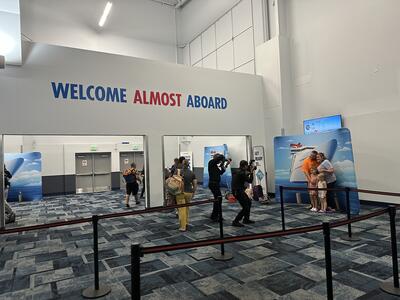
Some passengers like to dress in layers, wearing their swimsuits underneath their embarkation day outfits. However, I don't want to be in a swimsuit all day, so I like to throw a change of clothes in my carry-on. While I typically don't go for a swim on the first day, I know I have the option because I have a swimsuit on my person, rather than in my suitcase.
Additionally, if you have an outfit you are set on wearing for dinner on the first night, it's smart to pack it in your carry-on in case your checked luggage is delayed in reaching your stateroom. Thankfully, mainstream cruise lines are far more casual than they used to be, so it's acceptable to wear embarkation clothing to the Main Dining Room, including themed t-shirts, shorts, and flip-flops.
Read more: 15 Packing Tips for First-Time Cruisers (2024)
Speaking of your carry-on, make sure it contains all of your essentials

Your carry-on should contain more than a change of clothes. Like the airport, it should house your valuables, including jewelry, electronics, and medications. Above all, however, you do not want to pack your passport or birth certificate/government-issued ID in your suitcase. These documents must be checked by the port agents. Otherwise, you will not be allowed on the ship.
Before leaving my pre-cruise hotel, I put my passport in my carry-on and double-check its spot before I get in my rideshare. Even when I'm 100% positive that it's in my backpack, I get anxious I won't find it and have to open up my suitcase to dig through all my clothing in front of hundreds of other guests. As soon as I'm able to access my cabin, I place my passport and other valuables in the safe, so I do not have to worry about misplacing anything during the trip.
Read more: 25 items you should always pack in your cruise carry-on bag
Print out your boarding documents, including your luggage tag
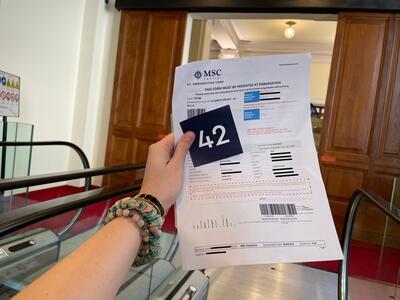
Once you've finished the online check-in process, you can access your boarding documentation. Some cruise lines, like Celebrity and Royal Caribbean, allow you to save your boarding pass to your mobile device, while others, namely Carnival and MSC Cruises, request guests have the pass printed out before arriving at the terminal.
Though printing passes feels archaic, arriving at the terminal unprepared will result in a delayed embarkation process. When completing the physical check-in process for a Carnival cruise, for example, the port agent who verifies your travel documentation stamps the pass, and as you move throughout the terminal, other agents will check to ensure you've been properly checked in.
Read more: The extra step you should take so you aren't delayed getting onboard a Carnival cruise
Book a suite or pay for priority access
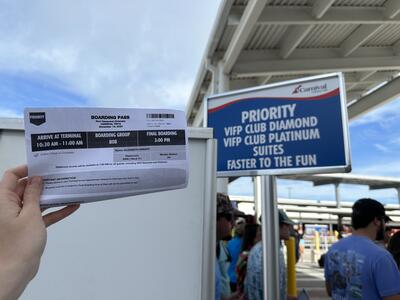
Booking a suite is the easiest way to bypass the standard lines at the terminal. In addition to a slew of onboard perks, you can utilize the priority check-in line. Of course, this is an expensive option, as some of the industry's largest suites can cost upwards of $100,000 for a 7-night cruise for a family of four. Even if you aren't staying in Royal Caribbean's massive Ultimate Family Townhouse/Suite, a suite will cost more than a standard interior room, making it impractical for guests on a budget.
If splurging on higher-end accommodations is out of the question, see if your sailing has priority access passes available. Carnival, for instance, has Faster to the Fun, while Royal Caribbean's expedited boarding pass is called The Key.
Depending on which line you're sailing with, the priority add-on may come with additional benefits, such as an exclusive embarkation lunch or early access to your stateroom to drop off your carry-on bags. Plus, it's cheaper than booking a suite. On Carnival's newest Excel Class ships, you can expect to pay around $159.95 per cabin for Faster to the Fun.
Read more: I paid $3,600 for a suite on Carnival Vista
Skip the embarkation photographer and head straight to the gangway

Not interested in purchasing an embarkation picture? It's not a requirement to have one taken! If you don't want to spend the money, you can walk past the photographers to the gangway. There will be plenty of opportunities for professional photos during the cruise.
Note that the lines on formal night get pretty long, so if you want to capture your family's Christmas card photo, budget enough time to wait before dinner. Plus, professional pictures aren't included in the cost of your cruise.
When I sailed on Carnival Elation, my finacée and I spent $70 on two photographs. While we felt the pictures were nice enough to purchase, professional photographs aren't a priority for us, especially since we sail so frequently.
Read more: 16 tips to not waste money on your first cruise
If you don't have a drink package, stop at a convenience store to stock up on soda and wine

Drink packages are one of the most expensive add-ons, sometimes costing upwards of $75 or $80 per person, per day! However, there are ways you can save money and enjoy a few alcoholic beverages on your cruise.
While on the way to the terminal, schedule time to stop at a local supermarket or convenience store where you can purchase a bottle of wine and/or a carton of soda. Though there are limitations on how many beverages you can bring onboard, paying for a bottle of wine off the ship is cheaper than onboard! Research your specific line's allowance beforehand, so you know exactly how much you can purchase. Royal Caribbean, for example, allows one 750ml bottle of wine or champagne per guest, while MSC Cruises prohibits passengers from bringing any beverages onboard.
If you purchase alcohol from the ship's onboard shop during your cruise, you won't be able to enjoy it until you get home, as they will keep all bottles until the last night or disembarkation morning. The same goes for any alcohol bought while in port; you'll have to turn it in during the security screening.
Read more: Are cruise drink packages worth it?


